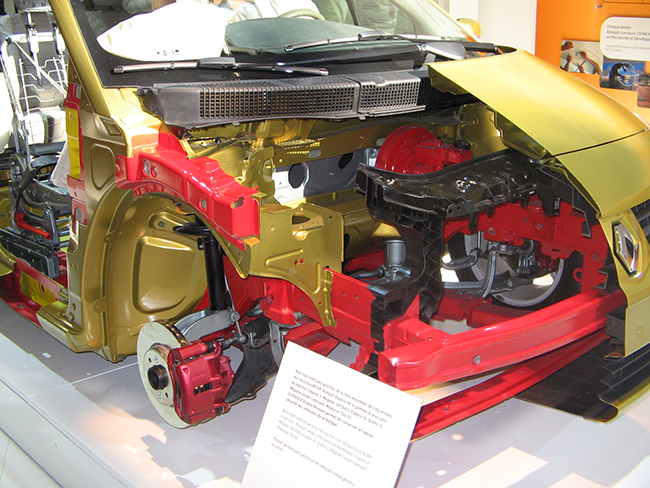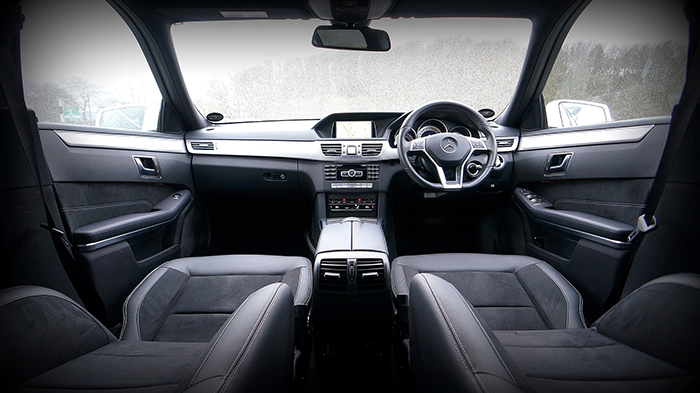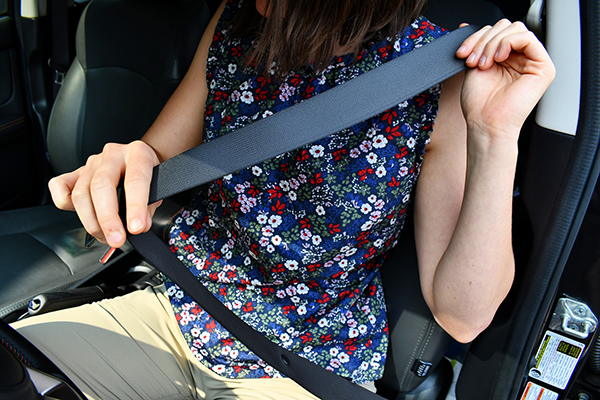
Vehicles: polymers hold their own
In road safety, a distinction is made between active and passive safety. One cannot be separated from the other. The first is to prevent accidents, the second to limit the consequences for vehicle occupants. Today, active safety is largely ensured by the electronics with which modern vehicles are equipped: ABS braking systems, radar, emergency braking or lane departure warning systems and even, on top-of-the-range vehicles, infrared remote sensing systems, known as Lidar. Although effective and having contributed to a significant reduction in the number of road deaths and injuries, these devices are not “life insurance”.
|
While polymers have their role to play in electronics, they are also found in tyres, which are mostly reinforced with polyester or polyamide textile fibres and various plasticising resins, all of which help to give tyres exceptional performance and durability properties. Another illustrative example is windscreen wiper blades which are made of elastomers, very flexible polymers. They will fit the shape of the windscreen and provide optimal wiping for maximum visibility. They are more resistant than natural rubber to UV rays and therefore degrade less quickly. |

Natural rubber is still used in tyres. However, it is mixed with synthetic polymers whose formulas are kept secret. It is reinforced with metal and textile fibres made of polyester or polyamide. |
Passive safety is just as important and is the focus of manufacturers’ attention, and polymers are favoured due to their ability to absorb shocks.
When it comes to the accordion effect, plastics know when to squash
Until the 1940s, cars were designed around a heavy metal frame made of steel bars on which the bodywork, engine, wheels and passenger compartment were placed. It makes for a strong car, and it can easily withstand medium-speed impacts. Unfortunately, this is not always true for the occupants. It took a while for engineers to understand why some people don’t survive a crash when the car is barely deformed. The explanation is now known and it is quite simple: a rigid car does not absorb impacts and the very powerful energy they generate is immediately transmitted into the passenger compartment. The occupants are the ones who take the brunt, and the outcome is often fatal…

Since the 1950s, manufacturers have abandoned the traditional chassis in favour of a monocoque structure that progressively deforms in the event of an impact, thus acting as a shock absorber |
Vehicles must therefore be made more deformable, thus absorbing energy. In order to do this, from the 1950s onwards, manufacturers gradually abandoned the traditional chassis for the so-called monocoque structure, a sort of cage made up of the bodywork and the floor. Made of steel, this structure is designed to deform in the event of a front or rear impact, leaving the passenger compartment intact, which some describe as a survival cell. This is called the accordion effect! A modern vehicle is designed to deform progressively. Depending on the intensity of the impact, the bumpers will first cushion the impact, followed by the chassis, which will deform at specific points to prevent the engine from landing on the knees of the passengers in the front, or the steering column from fracturing the driver’s skull. The same applies to the bonnet, which folds and is ejected upwards to prevent any guillotine effect. The aim of these numerous technological advances is to make a “haven” out of the passenger compartment, which must remain rigid to protect the occupants. Some sports cars or very high-end cars are equipped with a survival cell made of a carbon/epoxy composite material, known as carbon fibre reinforced polymer (CFRP), a material that is much lighter and stiffer than steel, complex to shape and, above all, more expensive. The exception to the rule was BMW’s I3 produced in 2013, the first electric vehicle in its range to be equipped with a partial CFRP cell. Even so, 250,000 units were produced, but the price was nothing like that of comparable models in size and power…
The fact that vehicles are safer today is partly due to polymers, materials that are flexible enough to absorb impacts but also irregularities in the road.
Bodywork: polymers are having a bumper time
Originally, bumpers were nothing more than a metal bar. They had only one function: to protect the bodywork. They provided effective protection, sure, as long as impacts were not too serious. But their rigidity was such that they could cause serious damage to vehicle users, pedestrians and cyclists alike. They stayed around for over 70 years… until the 1960s, when the American giant General Motors began to use plastics to design the bumpers of its vehicles. There are two reasons for this: they are easily moulded, which opens the door to a wide range of designs, and, above all, their flexibility was an asset for GM’s engineers in terms of shock absorption.
Another advantage is that in the event of a low-speed collision, they do not break and return to their original shape after deformation. The first vehicle in the world to be equipped with such an accessory was the luxurious Pontiac GTO, which came out in 1968. Its front bumper was made from a polymer called Endura by General Motors.

The Pontiac GTO was the first car in the world to receive a plastic bumper. This was based on a polymer called Endura by General Motors |
It was all to play for in convincing future owners who were used to the extremely popular chrome bars… So, the company director didn’t hesitate in getting up on stage for the adverts, hitting this bumper with a sledgehammer to show its strength. The way was cleared, and little by little all the manufacturers put aside metal in favour of polymers. |
In Europe, it was Renault who inaugurated them in 1972 on its brand new R5. Unlike the Americans, the manufacturer preferred to use fibreglass impregnated with polyester resin. This was the first mass-produced everyday car to opt for plastic bumpers. Renault even had to build a unit from scratch for the mass production of this component, which was a major innovation in itself.
In 1980, in a period of accelerating globalisation , the world’s leading manufacturers signed an agreement for the approval of vehicles on the European and North American markets (which are still the two largest markets in the world). This agreement stipulates that the bumpers must be able to absorb energy to a newly developed standard. This is how polymers became widespread, as they are the only materials capable of complying with these regulations, which tightened further in 2009 with the inclusion of measures to protect pedestrians, such as a ban on sharp corners. This is obviously not a problem for polymers, which can be moulded to any shape.
|
Today, bumpers are mainly made of polypropylene, polycarbonate (PC) and acrylonitrile butadiene styrene (ABS), which are ultra-resistant polymers. Next comes foam blocks that are usually made of expanded polypropylene (EPP), a material that combines lightness with outstanding absorption capacity. By deforming progressively, these foams actively participate in the desired accordion effect. The same material can also be found in seats, child seats, headrests and doors. |

The ease of moulding polymers such as PP, polycarbonate or ABS allows the bumpers to be an integral part of the design. The only constraint is to avoid sharp corners to protect pedestrians |
Indeed, while the survival cell must remain as rigid as possible so as not to deform on impact, this is not the case for other fittings such as seats which, in addition to being comfortable, must be sufficiently flexible to absorb the excess energy generated by the impact. This is particularly true when the impact is from the rear, and vehicle occupants are thrown towards the backrests and headrests of their seats.
Dashboards and windscreens: plastic’s enduring success
While many elements are invisibly lined with EPP (expanded polypropylene), others are not hidden. This is the case for dashboards, which are a veritable catalogue of polymers: polypropylene (PP), acrylonitrile butadiene styrene (ABS), polyvinyl chloride (PVC)… Chosen for their low weight and for their ease of use in all shapes, colours and textures, these elements have above all the main merit of not shattering, fragmenting, or flying apart as a result of an impact, even a serious one, and thus, never injuring the vehicle’s passengers.

The interiors of the vehicles are an array of polymers. There are several reasons for this: they are light, take on nice textures and above all do not shatter in the event of an impact, thus protecting the occupants. |
For the same reason, windscreens are now made of laminated glass. They consist of an invisible plastic film (usually polyvinyl butyral) sandwiched between two glass sheets. In the event of an explosion, the glass remains stuck to the film, is not projected into the vehicle and does not risk severely cutting the passengers.
Airbags: the deal is in the bag for polymers
The greatest road safety innovation of the last decades is well hidden! And it’s the airbag, a cushion made of polyamide 6-6, better known by its brand name, Nylon, which inflates in a few microseconds after an impact. Although not mandatory in all countries, airbags are now present in every corner of vehicles. Depending on the model, there could be up to a dozen of them: steering wheel, dashboard, doors, roof liner, etc. But the invention is not new.

No less than a dozen airbags, made of polyamide 6, are fitted to top-of-the-range vehicles. This protects all passengers, both front and rear |
It was again developed by American manufacturers in the 1950s. Initially, the idea was to dispense with seat belts, which were then simple, impractical lap belts. Already made of polyamide, the first airbags were installed on a fleet of Chevrolets, but they were not very successful. |
It was not until the 1980s that the invention was taken up and perfected by the German company Mercedes for its luxury models. The airbag has undoubtedly saved thousands of lives. One condition, however - and this is the twist in the tale - is that you must have your seatbelt on.
Never without my belt
It’s not widely known, but an airbag combined with a seatbelt is extremely well thought out. An airbag is not simply a balloon, it is made up of a multitude of cells. When it inflates, the pressure is extreme and few textiles can withstand it, hence the use of polyamide 6.6. In short, once inflated, it becomes as hard as a block of stone and, if not secured, the car’s occupant is thrown against it. This is why the cells are designed to burst immediately after inflation, making the cushion softer. This is where the seatbelt is essential. Equipped with a pre-tensioner, it initially holds the passenger against the seat. Then, a few milliseconds later, the belt is released, allowing the body to move and end up in the airbags which are already deflating, thus playing their protective role to the full.

With their three-point anchorage, the comfortable, soft-touch polyamide belts have been forgotten for decades. |
The wearing of seat belts goes back a long way. It appeared in 1896 in its very first version as a harness fitted to certain racing cars. Its objective was to prevent the rider from being ejected from the vehicle when cornering. It is still a simple abdominal strap made of finely woven cotton. The only problem is that in the event of a serious impact, this strap causes serious trauma to the liver and spleen. It was not until 1959 that it underwent its first major evolution. It was developed by a Volvo engineer who installed three anchor points in the vehicle, allowing a single strip of fabric to be used to make both a lap and diagonal strap. The modern seatbelt was born and was soon to be fitted to the brand’s cars, making Volvo one of the pioneers in safety. Incidentally, the manufacturer chose to leave its invention in the public domain so that it will benefit all road users, whether they drive a Volvo or any other vehicle. Since then, belts have evolved relatively little. The Peugeot-designed retractor system is still used on all belts in the world today, which are equipped with the pretensioning system that tightens the belt in the event of an impact, as mentioned above. Since the end of the Second World War, the preferred material has been polyamide, a polymer that is tear-proof when woven, flexible and comfortable.


